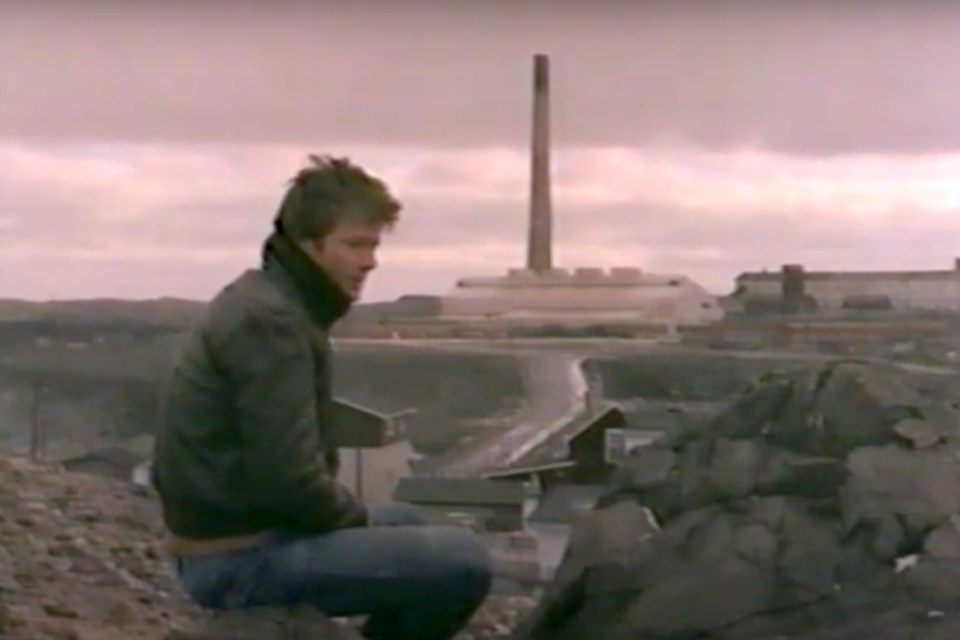It’s 1973 and Sudburians sitting in their seats at the City Centre Cinema One would definitely recognize the rocky landscapes up on the big screen.
Because, before they entered this cavernous den of motion pictures, they would find themselves surrounded by this same landscape; it is a part of them and they are a part of it. The film in question is Between Friends which was partially filmed in the two smelter communities that book-end this larger city, Coniston and Copper Cliff.
The plot is pretty simple. Here’s the tagline: “Three people caught in a fateful triangle of friendship, money, and love.”
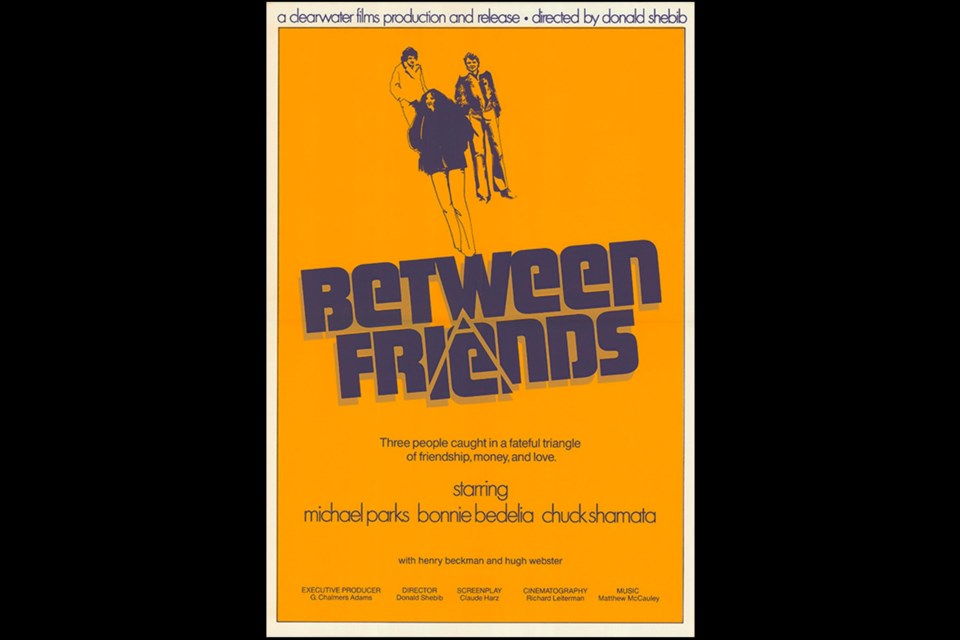
An ex-con (Will) and his friend (Coker) who have worked their entire lives at a nickel smelter (in this instance, an International Nickel Company doppelgänger named the Northern General Nickel Company) in Northern Ontario decide that it is time for the ultimate pay day. In his youth, Will was a professional thief before being caught and convicted, and now he has decided to return to his previous occupation by stealing the payroll of his current line of work.
For this, Will and Coker enlist the assistance of his daughter (Ellie), her boyfriend (Chino) and his American surfing buddy (Toby) to plan an elaborate heist.
As planning and preparation for the heist progresses, Toby and Ellie become attracted to each other and eventually sleep together. Down in Toronto where the trio resides, complications arise when Ellie confesses the affair to Chino. After Coker dies suddenly of a heart attack leaving Will distraught, the team decides to continue on and go through with the robbery. Unfortunately, their plans, despite all of their best efforts, go horribly awry. On the day of the crime, Will is shot and Chino is wounded during the getaway. Toby returns to Ellie with the body of her father, while a dying Chino makes a futile attempt to escape.
See what I mean, very simple.
In the fall of 1972, Toronto-based film company Clearwater Films spent three weeks filming this Canadian cinematic gem in our area. The cast and crew spent at least half of that time on location in Coniston. (For those who know me, you can understand my obsession with those scenes in particular.)
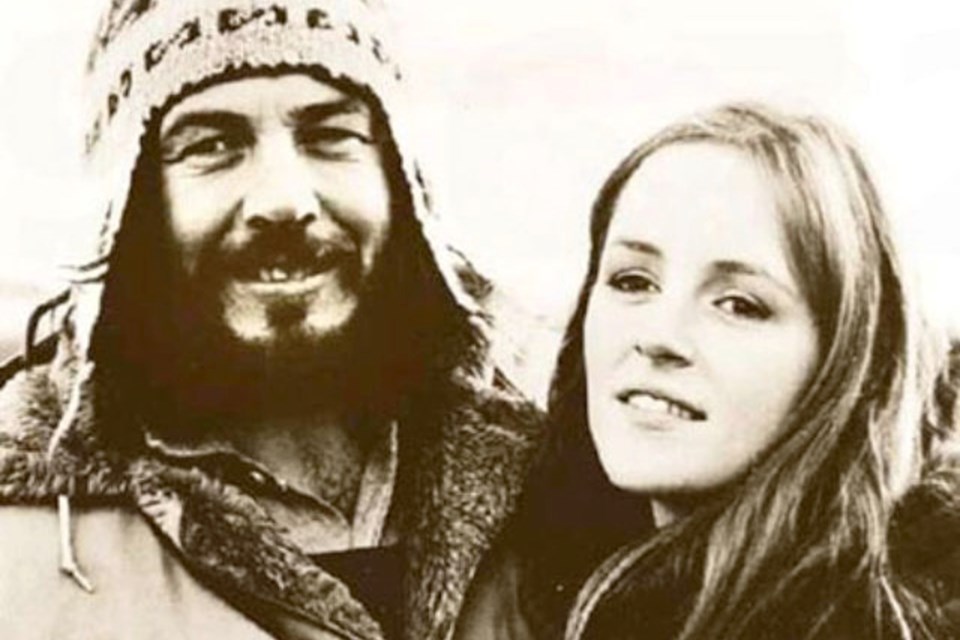
Filming took place during what could be described as an unseasonably cold week that fall. Some locals remember that it even snowed (with blizzard conditions once) and felt more like January at times.
They could be found arriving every day at the damp and chilly crack of dawn. The streets would be deserted, except for the lone outline of a young hockey hopeful on his way to get in some ice time at the barely two-year old Coniston arena. (Remember this boy for later)
The filming location chosen by the production team is known locally as “the other side of the tracks” (or by its residents as “the good side”). Here we find a shabby derelict dwelling perched on a rocky outcrop overlooking the recently shutdown Coniston smelter.
The director of the production, Don Shebib, was still in his early 30s when he directed Between Friends (originally titled Get Back), but he was already an established talent in Canadian filmmaking circles.
Three years earlier, he had made Goin' Down the Road (highly recommended, by the way), a portrait of transplanted Cape Bretoners that amazed film critics across North America and redefined Canadian film. Shebib had studied film at UCLA in the 1960s, which allowed him to infuse Between Friends with some of his own experiences.
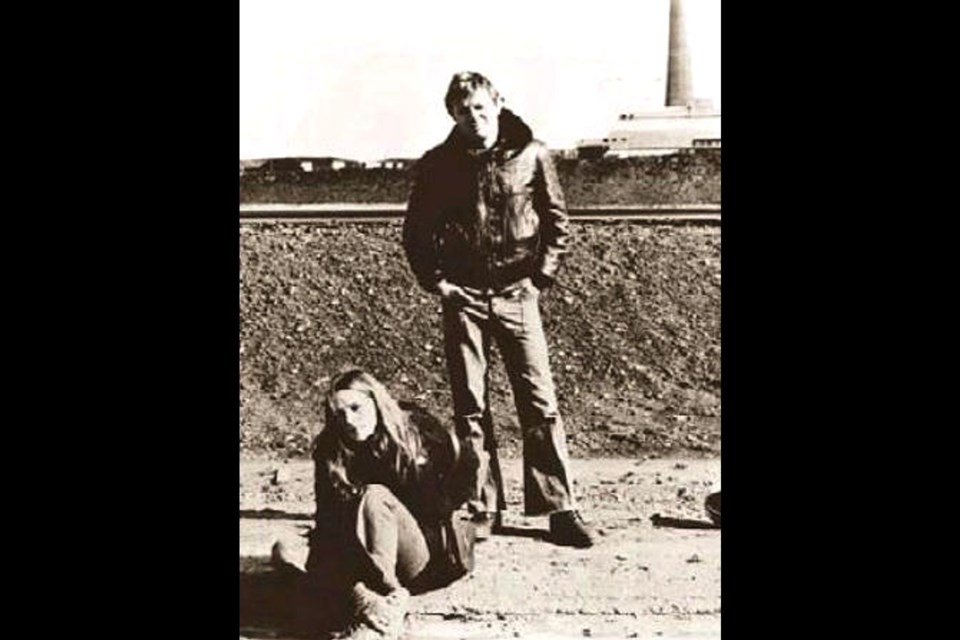
The character of Chino, for instance, is a Torontonian who pines for a return to California, where a decade or so earlier he befriended the character of Toby through a shared love of surfing. (In fact, Shebib's first film, made for the CBC, was a documentary about surfing)
The budget for this new film was $500,000, considerably more than he had in his pocket for Goin' Down the Road, which was made on a shoestring budget of $27,000.
Between Friends has the distinction of being the first Canadian feature film to be backed by a Canadian bank (which I guess was unheard of at the time). The Toronto-Dominion Bank put up some of the $500,000 budget along with other backers, including Famous Players and the Canadian Film Development Corporation.
Between takes, in order to deal with the unseasonable weather, the cast would huddle in the warmth of a Winnebago trailer, their portable dressing room for the length of their time in the Sudbury area, usually sipping hot coffee. Looking back, it was an impressive collection of talent gathered here.
With Between Friends, which was his third feature, the Toronto-based Shebib had finally built up enough cachet to attract bigger stars, and originally had Warren Beatty in mind for the lead role. Unfortunately, the Bonnie and Clyde actor wasn't available, leading to a different direction in casting.
The film’s lead is Michael Parks, a 33-year-old native of California, who was as far out of his environmental element as one would imagine. This was his first venture into Canada for filming, but nowhere near his beginnings in film. His first film role was the title character in the 1965 movie Bus Riley's Back in Town, co-starring Annie-Margaret. Parks was also a country and jazz singer who had already recorded four albums prior to his adventure in our city.
Known in acting circles as a James Dean-type, Parks was known for his mercurial ways and for sometimes becoming (as his director would soon learn) a handful on set. At times, he was known to ignore his lines and attempted to give his character, a surfer bum/small-time crook, a much cooler and more enigmatic take than the script called for, forcing Shebib to switch gears mid-shoot.
Even so, Parks was enamoured with his surroundings and was quoted at the time as saying about his experiences here, “(I) enjoyed mingling afterwards with the people of Sudbury because they are capable of having so much fun. It is so different here from Detroit or Chicago. Sudbury is unique in having a kind of north people feeling. It's like the northern part of Minnesota as opposed to Minneapolis. Attitudes are different, charming, and you get the feeling of the people; you are more in touch with them here.”
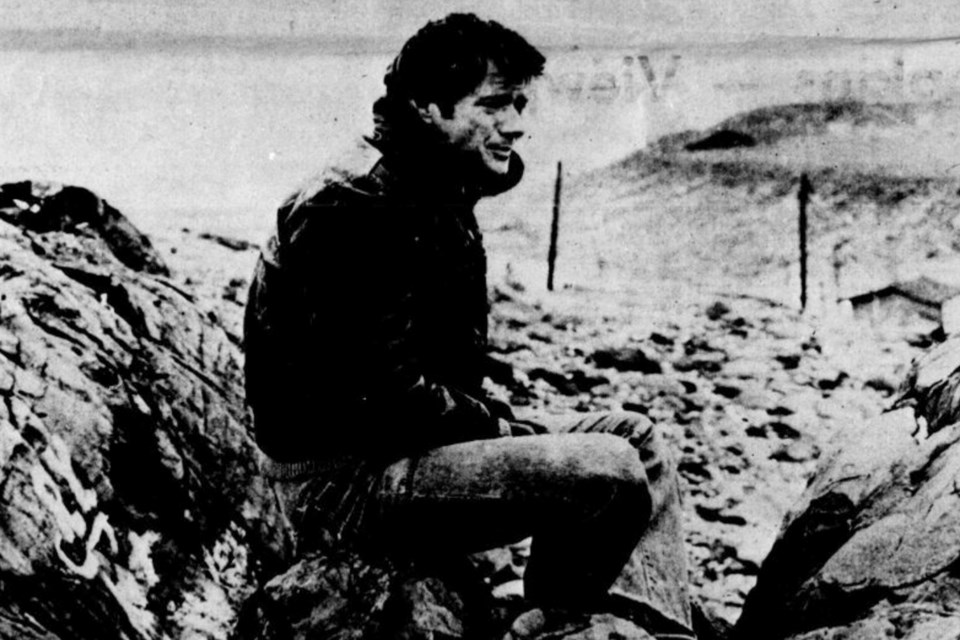
In his later years, an ardent (though not surprising) fan of Between Friends, the director Quentin Tarantino, would cast Parks in five of his movies, including the Kill Bill series and Django Unchained. Michael passed away in 2017, at the age of 77.
In Between Friends, Parks’ main wardrobe consists of a Second World War bomber jacket. The story goes that it was spotted being worn by a passerby to the film set, who generously offered him the coat. This coat became his character’s trademark. (I wonder where that coat ended up and who permanently loaned it to the production?)
His main co-star, Bonnie Bedelia, just so happens to also sport a trademark of the outwear variety for the film (though apparently not taken away from a local), a somewhat grubby trench-coat to keep warm amongst the northern elements.
Prior to her appearance in the Sudbury landscape, she had performed in many Broadway productions and Hollywood films, including They Shoot Horses, Don't They? But, it is her dual turns in the 1980s action franchise Die Hard as Holly Gennaro McLane, the feisty wife of Bruce Willis’ main character, John McLane, for which the vast majority of cinema goers will remember her.
And, like Holly, the character of Ellie, as played by Bedelia, though self-contained and somewhat lost, is also wise and tough. In one scene of the movie, Chino complains to her that “everybody else is having a good time," to which she responds with "Everybody else is everybody else … I'm me."
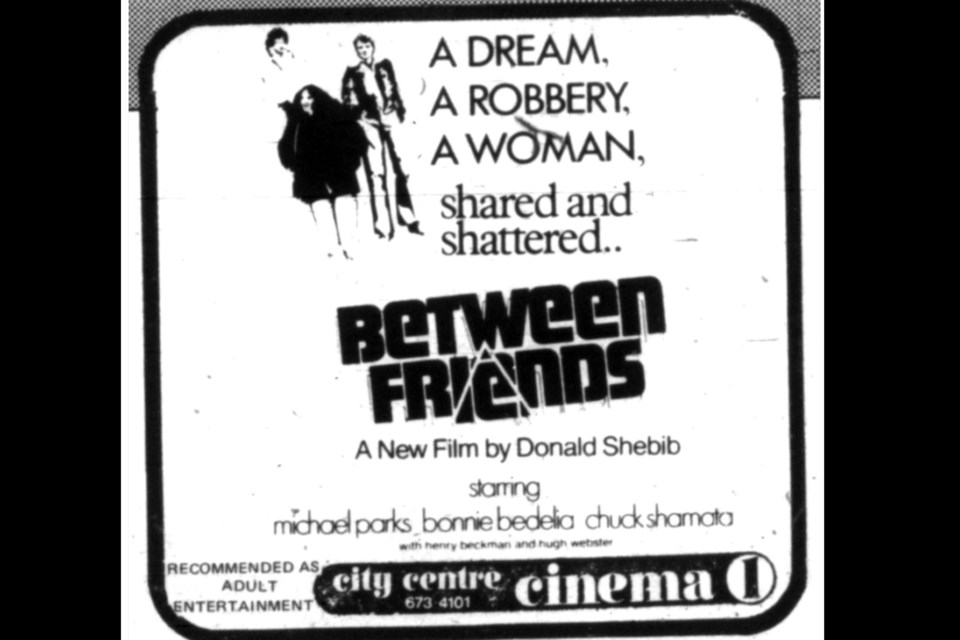
The third person in the triumvirate of main characters is Torontonian Chuck Shamata, who unlike his more experienced co-stars, was just beginning in the business, with this being his first motion picture role.
Shamata had even been to Sudbury once before, for a role in the TV show Adventures in Rainbow Country. He would go on to an extensive film, television and theatre career (which, like Bedelia’s, continues to this day) that would see him be nominated for three Canadian Screen Awards. And, in fact, Shebib would credit these last two actors with holding the entire film together.
As far as the remainder of the cast is concerned, a few local “easter eggs” can be found hidden (in plain sight) throughout the film, which to the discerning local eye gives it an even more authentic to the area flavour.
Guy Sanvido, who starred in the Sudbury Theatre Centre's 1972 production of Last of the Red Hot Lovers, appears in the film. Reverend Robert Munroe of Copper Cliff plays the part of a minister in a graveside scene. Other locals appear as guards or visitors during a tour of the mining operations, which was filmed on location in Copper Cliff. Among them are Gerda LeBlanc of Lively and Ted Flannigan, the superintendent at Little Stobie mine.
And finally, remember that boy walking to the hockey rink in Coniston? During a scene involving the three main characters discussing their next moves while standing in the middle of a Coniston road, two young boys pass behind them, ambling up onto the adjacent train tracks. One of those boys would make his trips to the rink payoff — he is future NHLer Jim Fox, who played nine seasons for the LA Kings and is the team’s current TV colour commentator.
The production also received co-operation and help from Tony Lloyd, the artistic director of the Sudbury Theatre Centre, as well as from Mary Sitko and Bob Hamer of the Public Relations Department of the Ontario Division of the International Nickel Company of Canada Limited, and from Lou Spracklin of the President Hotel.
During the entirety of their time in the Sudbury area, the cast and crew of 16 shot scenes in Coniston, on Inco property in Copper Cliff and also an exterior shot of the (just recently demolished) Ledo Hotel, where characters Toby and Ellie spend a night. The interior bar scenes, however, were filmed at the El Mocambo in Toronto.
Although their locale is never named in the film, it could never be mistaken for anywhere but Sudbury. The INCO smelter and its surrounding black (and bleak) landscape, yet to undergo its regreening makeover, play such an important part for the film’s atmosphere, that it could be forgiven if viewers consider it a part of the cast.
In September 1974, Donald Shebib screened Between Friends at the Sorrento Film Festival. Italian newspapers at the time reported that they viewed the movie's story (perhaps reading a touch too deeply into it) of the bloody conflict between a gangster from Canada (Chino) and one from the United States (Toby) as symbolic of underlying conflicts between the two neighbouring countries.
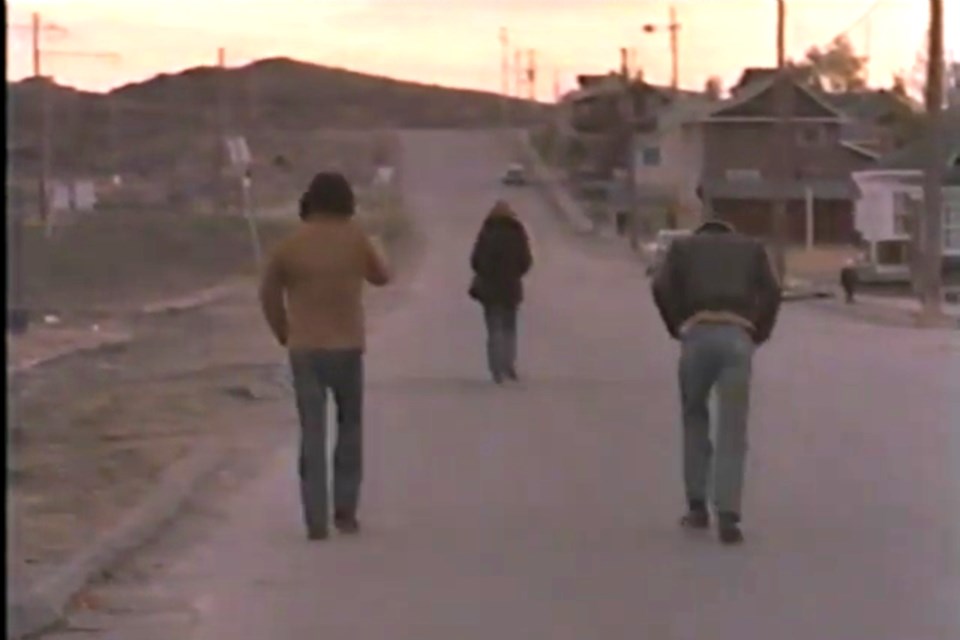
"The relationship between the former surfing companions who have turned criminal mates," Rome's Il Messaggero newspaper printed at the time, "very subtly hints at the differences between the uncertain Canadian and the hardened, determined son of the United States." Chuck Shamata even received a “Best Actor” award at Sorrento from the legendary Italian director Vittorio DeSica.
Prior to this, the film had been well received at the Cannes Film Festival and also the Berlin International Film Festival (being one of only two Canadian films) where it was in competition for the Golden Bear Award for Best Picture.
Unfortunately for Sudburians, unless you were a part of that audience at the City Centre, viewing this 1973 classic upon its release, the window of opportunity to view it was extremely narrow. It, quite literally, opened, received rave reviews from critics and many who saw it, then disappeared, languishing in an all too undeserving obscurity.
If Cinefest had existed at the time that Between Friends came out (it only launched in 1989), I have no doubt that it would have had top billing on a gala night.
Between Friends is like an archive, a time capsule sealed in the early 1970s, capturing a Sudbury of a different time.
A time on the cusp of renewal, before regreening which lead to the large scale urban and suburban visual rejuvenation that would take root like the seeds that were planted on those same rocky landscapes upon which the cast walked 50 years ago. I invite you to now to re-introduce yourselves to the Sudbury of the past by checking out Between Friends in the only place that I have been able to find it: YouTube. Here’s a link for you to watch, go make some popcorn.
Jason Marcon is a writer and history enthusiast in Greater Sudbury. He runs the Coniston Historical Group and the Sudbury Then and Now Facebook page. Then & Now is made possible by our Community Leaders Program.
